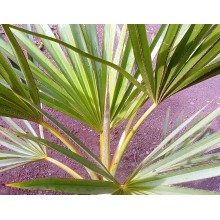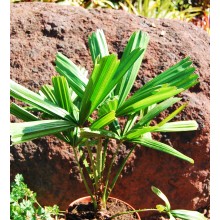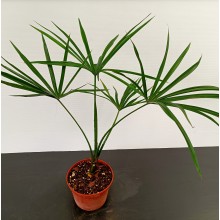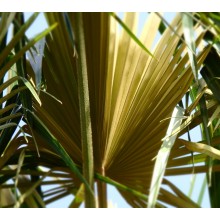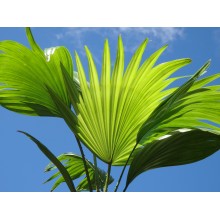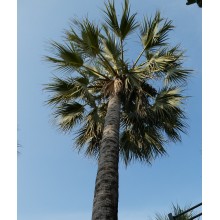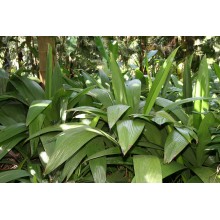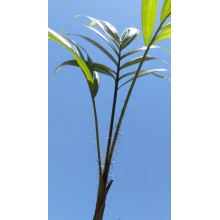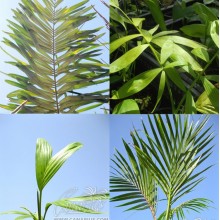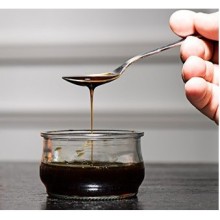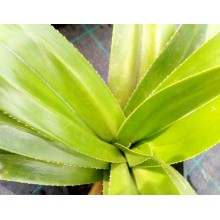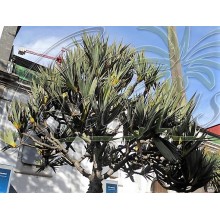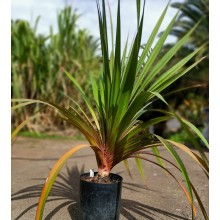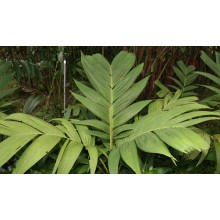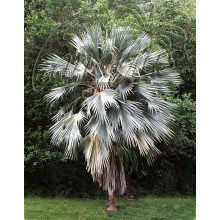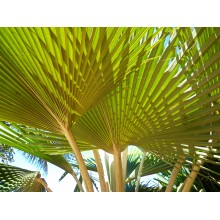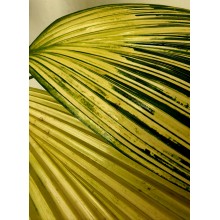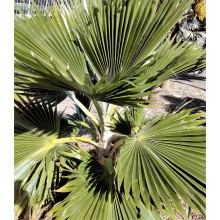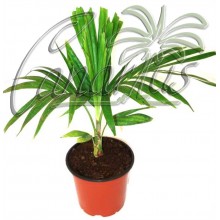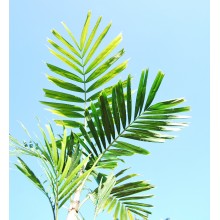Palme Ci sono 101 prodotti.

La famiglia delle palme, Arecaceae o Palmae, comprende circa 2.400 specie, originarie di climi caldi del mondo, che vanno da specie tropicali delicate alle palme resistenti a freddo. Alcune palme possono essere piantati all'aperto in Europa centrale e soportare gelate, ben al di sotto -10 ° C (14 F). Coloro che vivono in paesi del Mediterraneo può crescere un maggior numero di specie all'aperto. Alcuni coltivatori in Sud Europa costiera stanno coltivando collezioni di palme all'aperto, contenenti più di 100 specie.
Canarius spedirà soltanto palme robuste, coltivate in piccoli vasi per ridurre i costi di spedizione e i problemi di gestione. Pertanto, trapiantarle per grandi vasi poco dopo che ricevete il pacchetto. Siate pronti a dare loro il meglio. Alcune palme possono prendere neve, alcuni possono vivere all'interno o in vaso, e alcuni sono molto tropicale. Basta scegliere uno che può prosperare in vostre condizioni.
Quali palme può crescere nella vostra zona? Leggi la nostra lista di Palme resistenti al freddo per l'Europa. Visitate il blog Canarius e conosce meglio le nostre palme. Vedrete le immagini dalle vivai: diversi tipi di Palme di Nuova Zelanda, Palme Bottiglia con una qualità superiore di radice.
-
Latania verschaffeltii LARGE
Latania verschaffeltii LARGE
Yellow Latan Palm. Yellow colour is eyecatchy juvenile palms, as they can turn very yellow, especially in cool sunny weather.
49,30 € -
Licuala spinosa
Licuala spinosa
This is the hardiest species in the genus Licuala, resistant to drought, wind, coastal conditions and short light frosts. It is a clumping palm from SE Asia. Its leaves are fantastic, glossy pinwheels.
72,00 € -
Livistona benthamii
Livistona benthamii
This species is smaller than other livistona, with glossy drooping segments, reminiscent of the more common, and much larger, Livistona decora.
43,00 € -
Livistona fulva
Livistona fulva
Livistona fulva is a palm species, restricted in distribution to the Blackdown Tablelands in central Queensland, Australia. Livistona fulva is a tall solitary palm. In nature, it grows in open forests; in cultivation. it prefers a warm temperate climate and sunny position.
26,60 € -
Medemia argun
Medemia argun
Rare palm from the desert of Sudan and Egypt. Medemia is a relative of Bismarckia and bears elegant grey-blue arching leaves. It was considered extinct in the wild until its rediscovery in the 90's. It is still hard to find ...
48,00 € -
Molineria capitulata - Palm Grass (Curculigo capitulata)
Molineria capitulata - Palm Grass (Curculigo capitulata)
Ornamental palm-like herbaceous plant from SE Asia to Australia. Palm-grass grows in bright shade and creeps as a tall ground cover, with very showy ribbed leaves, resembling the juvenile foliage of so many palms, like Syagrus romanzoffiana.
25,44 € 31,80 €Prezzi ridotti! -
Oncosperma tigillarium
Oncosperma tigillarium
Everybody wants one of these palms, but few can afford to grow one to total maturity. Oncosperma palms become the most supreme landscaping specimens, with many tall slender stems and wildly exotic drooping leaves, with thousands of spines.
52,00 € -
Pack - Palme pinnate subtropicali
Pack - Palme pinnate subtropicali
Non tutte le palme sono alberi tropicali. Alcune specie provengono da zone subtropicali ed anche resistere a temperature fredde. Queste specie sono palme pinnate (foglie a forma di piuma) e può crescere in aree dove le gelate sono rare.Proponiamo alcune di queste specie: Chamaedorea klotschiana, Allagoptera caudescens, Rhopalostylis baueri o...
63,33 € 74,50 €Prezzi ridotti! -
Palm Honey - Phoenix canariensis syrup
Palm Honey - Phoenix canariensis syrup
Palm Honey or Palm Syrup is an edible sweet syrup produced produced in the Canary Islands from the sap of the native palm tree, by tapping the tree in a sustainable way. It is thinner and darker than bee-honey. Bo th are natural sweeteners, but there is a big difference in taste and content. Try it on Desserts, Fresh Cheese, Liqueurs, or Sweetener for Tea.
19,40 € -
Pandanus dubius
Pandanus dubius
This is one of the most ornamental species in the genus Pandanus. Leaves are very wide, deeply plicated with moderate spines and a drip-tip appendix. All is very elegant, of a deep and glossy green.
46,50 € -
Pandanus utilis
Pandanus utilis
Palm-like tree of unreal architecture, native to Madagascar and Mauritius. A symbol of tropical gardening.
56,00 € -
Pandanus utilis Large
Pandanus utilis Large
Palm-like tree of unreal architecture, native to Madagascar and Mauritius. A symbol of tropical gardening. Long specimen with 6cm of diameter and 1,1 meters long.
92,60 € -
PInanga coronata 'Kuhlii'
PInanga coronata 'Kuhlii'
Very ornamental and colourful small clumping palm from SE Asia. Leaves and sheaths have different shades of green, mottled with yellow. The young new leaf is mottled in red-maroon.
35,20 € -
Pritchardia hillebrandii 'Blue Moon'
Pritchardia hillebrandii 'Blue Moon'
Compact, silvery-blue form of Pritchardia hillebrandtii, with black fruits, originated in a small islet in Hawaii. Please be patient, this plant will not show any blue until late.
34,70 € -
Pritchardia minor
Pritchardia minor
This is the smallest of all Pritchardia species! It is endangered and native to the island of Kauai, at 500-1300 m elevation, so it is able to grow in cool conditions.
42,00 € -
Pritchardia remota 'Variegata'
Pritchardia remota 'Variegata'
Prithchardia remota comes from a very harsh island in Hawaii and it is possibly the best for mediterranean conditions. This year we have spotted a few variegated Pritchardias in a batch of P. remota. h= 70 cm
112,20 € 132,00 €Prezzi ridotti! -
Pritchardia thurstonii
Pritchardia thurstonii
Pure beauty lives in this small to medium sized fan palm. Leaves are beautifully stiff and plicated as in an accordeon. Fruits are held in small bunches hanging on long, arching rachis. This palm grows wild in the most remote islets in the pacific.
29,30 € -
Ptychosperma elegans
Ptychosperma elegans
This is one of the most classic and beautiful mid sized palms, from Australia. They are "elegant" in all their parts, just as their name says.
34,70 € -
Ptychosperma macarthurii
Ptychosperma macarthurii
Popular clumping palm in tropical and suptropical countries. Ptychosperma macarthurii is native to NE Australia and New Guinea.
72,00 €
Al momento ci sono pochi prodotti in questa categoria Palme

















